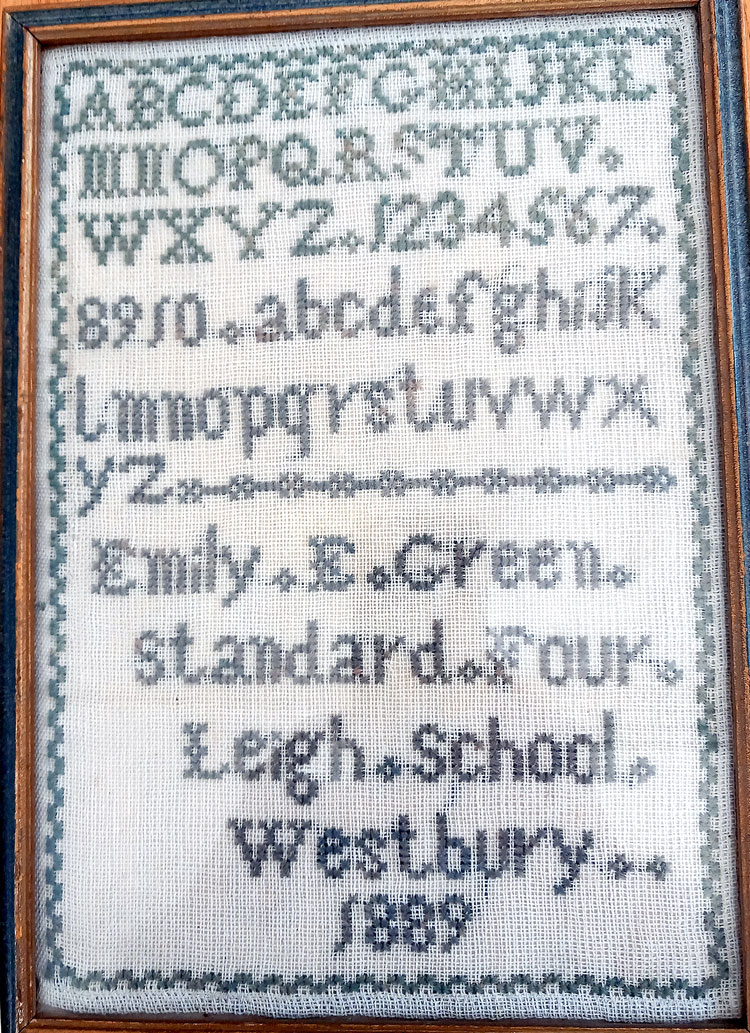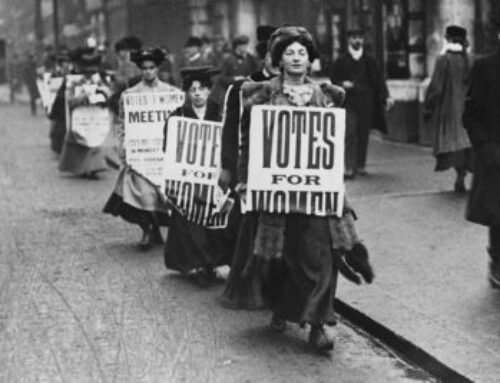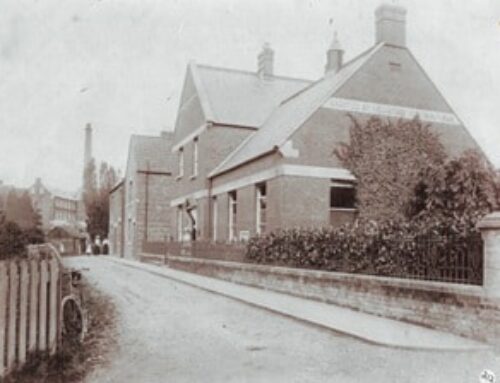By Brenda Pyne…
Welcome to what is the first of Westbury Museum’s blogs – we hope you will enjoy the subjects we choose.
With the children going back to school after their summer break, we found an item in our collections which we thought is very relevant but would also take us back in time a little – to 1889 when Queen Victoria was still on the throne.

The item is a sampler worked in blue thread on plain weave linen fabric. This sampler was worked by a young girl of about 10 years old whilst she was at school. Emily Elizabeth Green was born on 15 October 1879 and lived in the neighbouring village of Westbury Leigh with her parents, John and Ann and four of their children.
Education is very much taken for granted these days but children living in the nineteenth century like Emily were not always so fortunate as most children did not attend school but went out to work to earn money for their families. In 1861, the census shows that clothier William Matravers employed 56 adults and 214 children in his Town Mill here in Westbury where the children (aged under 10 years) worked for 8 hours every day but also had to find time for a compulsory 2 hours of education!
The 1870 Education Act made elementary education compulsory for all children aged five to 12 but tuition had to be paid for. Attendance became compulsory ten years later in 1891 when education became free. Thanks to the Act, girls began to learn reading, writing and (a)rithmetic – the three Rs – but also the “practical” female skills such as sewing and needlework to prepare them for their roles within the home. Sewing was seen as an essential feminine skill – plain sewing to make and mend clothing and household items and embroidery to decorate them.
Emily’s sampler shows us what she was being taught – carefully embroidered alphabets and numbers are common in needlework samplers from that time. Alphabets allowed girls to practice the marking of linen (sheets, undergarments etc.) while spot motifs and border patterns could be used to decorate both clothes and domestic furnishings. However, by the time Emily was sewing industriously in her classroom, samplers rarely showed some of the more intricate stitchwork you see in earlier centuries and were worked almost exclusively in cross stitch.
Children sat at desks in their classroom in rows, facing the teacher at the front of the class. They learnt mainly by copying or repeating aloud several times, the teacher’s notes on the blackboard. Religious stories were an important part of moral training and were often used in literacy and numeracy exercises. Other subjects included geometry, history, geography, science, nature studies and drawing.





